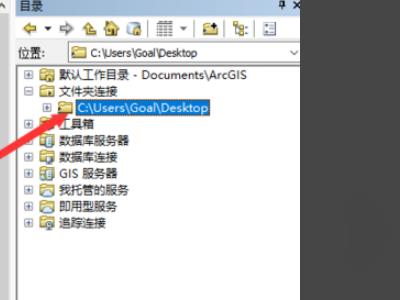哪位大侠知道fluent中用欧拉模型模拟固液两相流时,interaction中的drag coefficient怎么设置?
Posted
tags:
篇首语:本文由小常识网(cha138.com)小编为大家整理,主要介绍了哪位大侠知道fluent中用欧拉模型模拟固液两相流时,interaction中的drag coefficient怎么设置?相关的知识,希望对你有一定的参考价值。
fluent中用欧拉模型模拟固液两相流时,interaction中的drag coefficient怎么设置?schiller-naumann适用于什么条件?syamlal-obrien呢?这些怎么选?
Specifying the Drag FunctionFLUENT 允许你为一对相指定曳力函数,步骤如下:
1.Click the Drag tab to display the Drag Function inputs.
2. 对每一对相,从下面相应的列表中选择合适的曳力函数。
(1) Select schiller-naumann to use the fluid-fluid drag function described by
Equation 20.4-19. The Schiller and Naumann model is the default method, and it
is acceptable for general use in all fluid-fluid multiphase calculations.
(2) Select morsi-alexander to use the fluid-fluid drag function described by
Equation 20.4-23. The Morsi and Alexander model is the most complete,
adjusting the function definition frequently over a large range of Reynolds numbers,
but calculations with this model may be less stable than with the other models.
(3) Select symmetric to use the fluid-fluid drag function described by
Equation 20.4-28. The symmetric model is recommended for flows in which the
secondary (dispersed) phase in one region of the domain becomes the primary
(continuous) phase in another. For example, if air is injected into the bottom of a
container filled halfway with water, the air is the dispersed phase in the bottom half
of the container; in the top half of the container, the air is the continuous phase.
(4) Select wen-yu to use the fluid-solid drag function described by Equation 20.4-40.
The Wen and Yu model is applicable for dilute phase flows, in which the total
secondary phase volume fraction is significantly lower than that of the primary
phase.
(5) Select gidaspow to use the fluid-solid drag function described by
Equation 20.4-42. The Gidaspow model is recommended for dense fluidized beds.
(6) Select syamlal-obrien to use the fluid-solid drag function described by
Equation 20.4-32. The Syamlal-O'Brien model is recommended for use inconjunction with the Syamlal-O'Brien model for granular viscosity.
(7) Select syamlal-obrien-symmetric to use the solid-solid drag function described by
Equation 20.4-44. The symmetric Syamlal-O'Brien model is appropriate for a pair
of solid phases.
(8) Select constant to specify a constant value for the drag function, and then specify
the value in the text field.
(9) Select user-defined to use a user-defined function for the drag function (see the
separate UDF Manual for details).
(10) If you want to temporarily ignore the interaction between two phases, select none.
Specifying the Restitution Coefficients (Granular Flow Only)
对颗粒流,你必须为颗粒间的碰撞指定归还系数。除了为每一对颗粒相之间的碰撞指定归还系数外,你也得为同相颗粒之间的碰撞指定归还系数。
步骤如下:
1. Click the Collisions tab to display the Restitution Coefficient inputs.
2.For each pair of phases, specify a constant restitution coefficient. All restitution
coefficients are equal to 0.9 by default.
Including the Lift Force
对颗粒和非颗粒流,在第二相颗粒、液滴、或气泡中包含升力的影响是可能的。这些升力作用于颗粒、液滴或气泡主要是由于主相流场中的速度梯度。在大多数情形下,升力与曳力相比是不重要的,因此没必要包含它,如果升力重要(也就是说,如果相很快分离),你可以包含这个影响。
!!注意对大颗粒,升力更重要,但是FLUENT 模型假设粒子直径远小于粒子间距离。这样对
接近充满的颗粒(closely packed particles)或者小颗粒,包含升力是不合适的。
包含升力影响的步骤如下:
1. Click the Lift tab to display the Lift Coefficient inputs.
2. 对每一对相,从下面相应的列表中选择合适的指定方法。注意,既然作用于颗粒、液滴
或气泡的升力主要是由于主相流场中的速度梯度,你不必为存在于两个第二相间的每对
相指定升力系数;只对存在于第二相和主相之间的每对相指定升力系数。
(1) Select none (the default) to ignore the effect of lift forces.
(2) Select constant to specify a constant lift coefficient, and then specify the value in the
text field.
(3) Select user-defined to use a user-defined function for the lift coefficient (see the
separate UDF Manual for details).
Including the Virtual Mass Force
对颗粒和非颗粒流,当第二相相对于主相加速时包含存在的虚拟质量力是可能的。当第二相的密度远小于主相的密度时虚拟质量的影响是重
要的(也就是对瞬态泡状柱流(transient bubble column))。
包含虚拟质量力的影响,turn on the Virtual Mass option in the Phase Interaction panel.
虚拟质量力的影响被包含在所有第二相内;使它仅为颗粒相是不可能的。
20.6.11 Including Body Force(包含体积力)
在许多情况下,相的运动部分是由于重力的影响。为了包含这个体积力,应在 Operating
Conditions panel 下选择Gravity 并且指定Gravitational Acceleration.
Define Operating Conditions...
对于VOF 计算,你应当在Operating Conditions panel 下选择Specified Operating
Density,并且在Operating Density 下为最轻相设置密度。(这种排除了水力静压的积累,
提高了round-off 精度为动量平衡)。如果任何一相都是可压缩的,设置Operating Density
为零。
!!对于涉及体积力的VOF 和mixture 计算,建议你在Multiphase Model panel 下为
Body Force Formulation 选择Implicit Body Force.这种处理通过解决压力梯度和动量方
程中体积力的部分平衡提高了解的收敛。
参考资料:FLUENT中文全教程751-986
参考技术A fluent帮助里面好像就有吧。关于曳力采用方程就有介绍。哪位大侠知道:ArcGIS10再打开shp格式文件时为啥会出现"打开要素时出错"和“无法指定数据对象”字样?
ArcGIS10再打开shp格式文件时出现错误是设置错误造成的,解决方法如下:
1、打开电脑中的Arc,点击右侧目录栏中的“链接到文件夹”图标,并在弹出的窗口中选择要连接的文件夹。

2、连接成功后,展开右侧目录栏中的“文件夹链接”文件夹,可以看到已连接的文件夹。

3、点击菜单栏中“文件”>"添加数据">"添加XY数据"。

4、在弹出的添加XY数据窗口中,添加已准备好的Excel表格数据。出现“连接到数据库失败。出现基础数据库错误。

5、再次添加添加XY数据数据,选择低版本的excel表格数据即可成功添加。

以上是关于哪位大侠知道fluent中用欧拉模型模拟固液两相流时,interaction中的drag coefficient怎么设置?的主要内容,如果未能解决你的问题,请参考以下文章